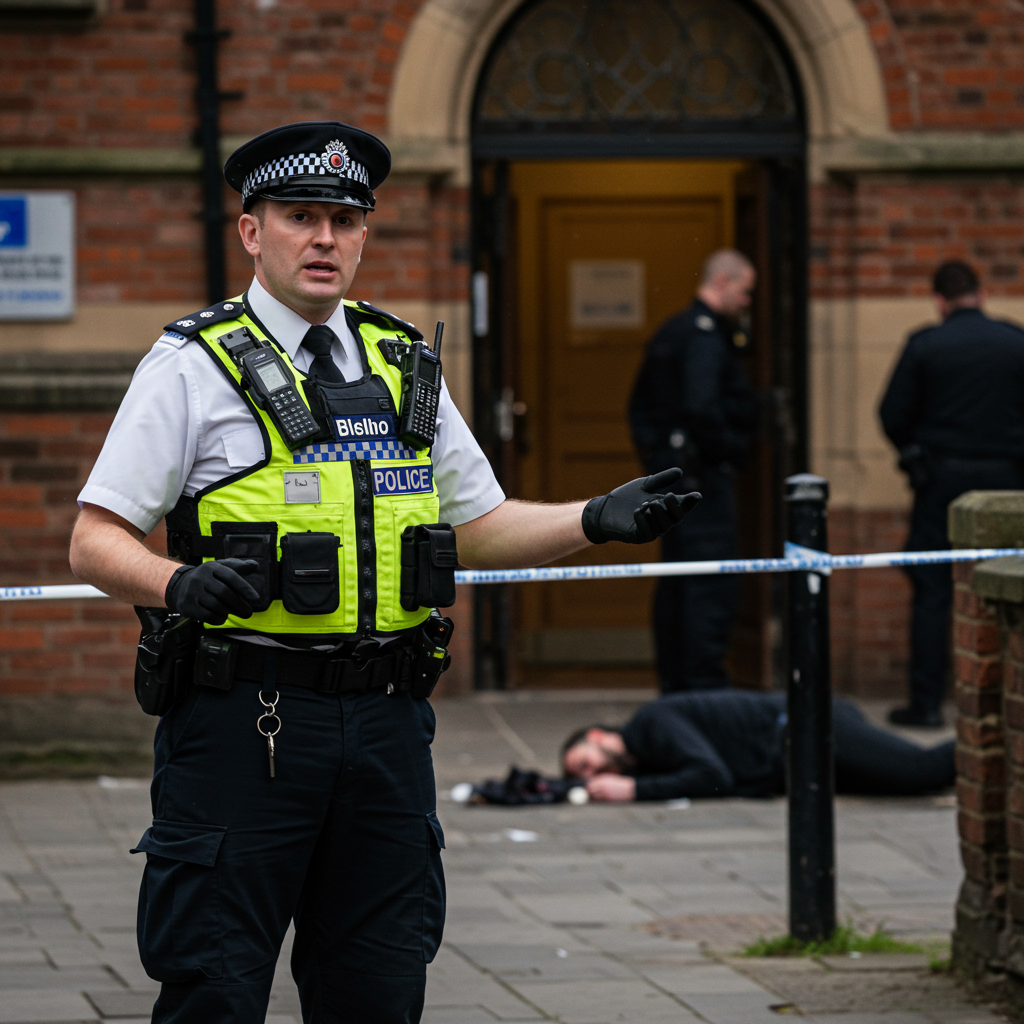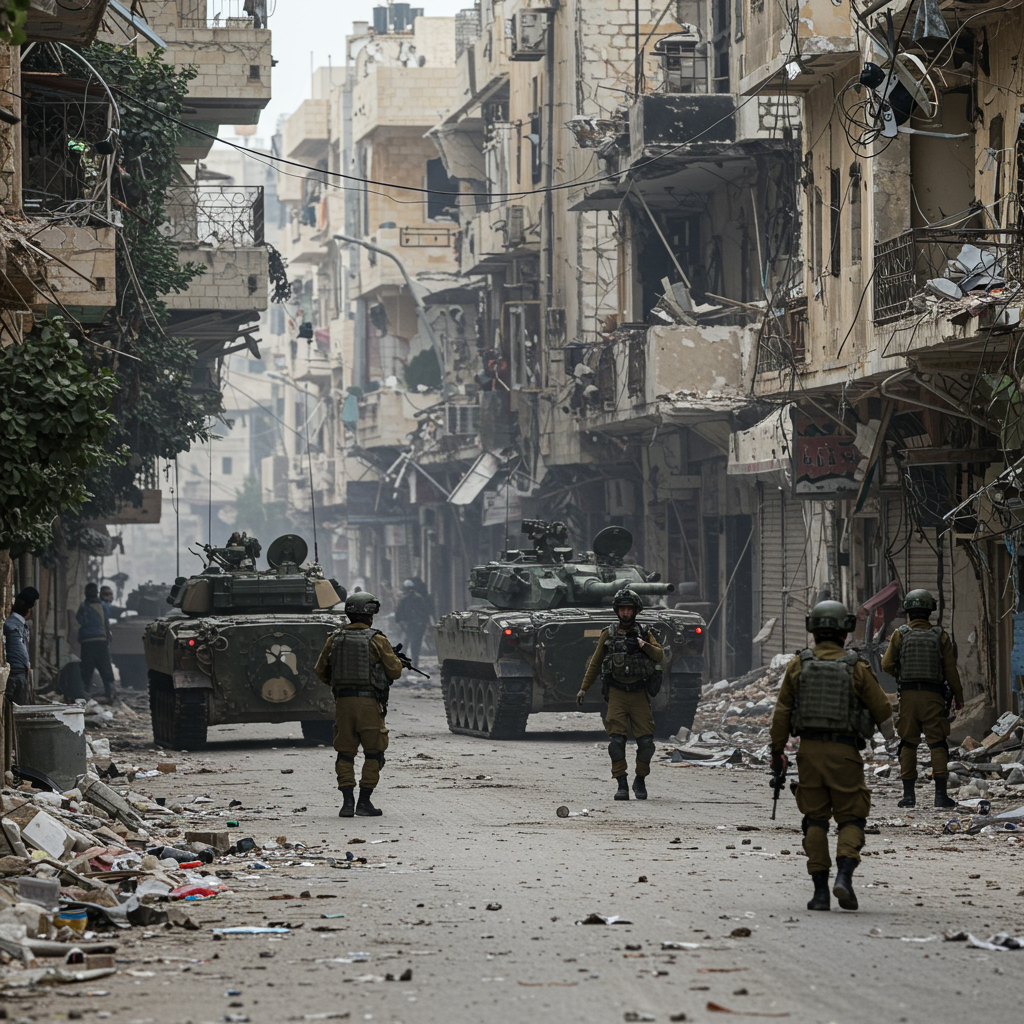Intensified israeli military actions across the Gaza Strip have resulted in dozens of reported deaths, compounding an already dire humanitarian crisis. Rescuers and local health authorities indicate significant casualties occurred on a recent Thursday, alongside ongoing concerns over civilian safety and aid access. These events unfold amidst conflicting reports regarding the scale of deaths and stalled efforts to negotiate a new ceasefire and hostage release agreement. The situation remains fluid, marked by a deep human cost and complex political maneuvering.
Deadly Strikes Rock Gaza
The day saw a notable increase in Israeli fire across the Palestinian territory, with reports of dozens killed. According to the Hamas-run Civil Defence agency, at least 69 people died due to Israeli actions on this particular Thursday. Gaza’s Hamas-run health ministry separately reported 118 fatalities across the territory within a 24-hour period. These figures highlight the intense nature of the recent bombardment.
One particularly devastating incident involved an air strike on a school in Gaza City. This building was serving as a shelter for families displaced by the conflict. Rescue workers and medics reported 15 people, primarily women and children, were killed in this strike before dawn. A witness described the horror, recounting their tent collapsing in fire and questioning the fate of the children. The Israeli military, the IDF, confirmed a strike in the area. They stated they targeted a “key Hamas terrorist” operating from a “command-and-control centre” in Gaza City, without explicitly mentioning the school building. The IDF also claimed it took steps to avoid harming civilians and accused Hamas fighters of using residents as human shields, an allegation consistently denied by the group.
Further south, in the al-Mawasi area, designated by the IDF as a zone for civilians to evacuate to for safety, a tent was reportedly struck overnight. At least five displaced individuals were killed in this incident. A nearby resident witnessed the bodies of women and children wrapped in blankets, expressing profound despair and stating that despite claims, no zone in Gaza feels truly safe; every location appears to be a potential target.
Another strike in Beit Hanoun killed 15 people from one family in a house. A recent strike in Muwasi, also declared a humanitarian zone, hit a makeshift cafeteria. This incident reportedly killed at least 11 people, including children, according to officials at Nasser Hospital. Such strikes underscore the pervasive danger across the Strip, even in areas meant to provide refuge.
The Perilous Quest for Aid
Seeking humanitarian aid in Gaza has become fraught with extreme danger. Reports indicate a significant number of fatalities among those attempting to access food and supplies. The Civil Defence agency stated that 38 people were killed while either waiting for or traveling to collect aid. Specific locations cited include areas near the Israeli military’s Netzarim corridor in central Gaza and the southern Rafah area. Medics in Khan Younis separately reported at least 20 deaths among people en route to an aid distribution center.
The Israeli military has largely dismissed these reports. An IDF spokesman specifically declared that reports of “extensive casualties in the aid distribution centres are lies.” He acknowledged the complex challenges faced by Israeli forces and stated that lessons are being learned from incidents to prevent future harm. However, conflicting accounts persist.
Since late May, when the US- and Israel-backed Gaza Humanitarian Foundation (GHF) began operating, there have been almost daily reports of deadly incidents near distribution sites. Gaza’s health ministry claims a staggering 549 people have been killed and 4,000 injured while seeking aid since May 26th. Despite these reports, both the IDF and the GHF have denied awareness of such incidents or casualties occurring near their operational sites. Funerals have reportedly been held for dozens of people the health ministry stated were killed waiting for aid on a single day. One resident tragically referred to aid points as “death points,” reflecting the desperate risks involved.
Contested Aid Distribution Mechanism
The GHF represents a new and highly controversial approach to aid delivery in Gaza. Established to bypass the United Nations and other traditional aid organizations, the GHF utilizes US private security contractors and operates under Israeli military oversight. Israel and the US maintain this system is necessary to prevent Hamas from diverting aid supplies, an accusation denied by Hamas. The GHF reports distributing large quantities of food, claiming millions of meals have been delivered.
However, major international bodies, including the UN and numerous aid groups, refuse to cooperate with the GHF. They argue that its structure aligns too closely with Israeli military goals, violating fundamental humanitarian principles of neutrality and independence. Concerns have also been raised about the GHF’s logistical capacity and its proposed distribution model. Plans for militarized centers in southern Gaza, overseen by military bases, are seen as impractical for vulnerable individuals who cannot easily travel long distances through a war-torn landscape to collect heavy aid boxes. UNICEF noted that without sufficient food, people face a “lethal choice” under these conditions. Some critics argue these mechanisms could potentially “further weaponise aid.”
Stalled Ceasefire Efforts
Against the backdrop of escalating violence, diplomatic efforts to secure a ceasefire and the release of hostages continue, albeit with significant challenges. US President Donald Trump has reportedly been pushing for a new deal, suggesting at one point that Israel had agreed to necessary conditions for a 60-day ceasefire. However, sources on the ground paint a less optimistic picture. A senior Hamas official stated that while mediators are intensifying efforts, negotiations remain stalled, and no new proposal has been formally received by the group. An Israeli official reportedly corroborated this view, acknowledging that major disagreements persist.
Hamas has indicated it is studying proposals but maintains its core demands include an end to the war and a complete Israeli withdrawal from Gaza. Israeli Prime Minister Benjamin Netanyahu, on the other hand, remains steadfast in his declared objective to eliminate the Palestinian armed group. Reports also indicate Israel announced the initial stages of a new ground offensive, “Gideon’s Chariots,” coinciding with the reports of renewed ceasefire talks. This simultaneous pursuit of military pressure and negotiation highlights the complex and often contradictory dynamics of the conflict. Previous ceasefire attempts have collapsed, with recent Israeli military operations reportedly aimed at pressuring Hamas regarding the remaining hostages believed to be held in Gaza.
Regional Tensions and Humanitarian Concerns
The conflict in Gaza is also intertwined with broader regional tensions. Israeli strikes have recently extended into Lebanon, reportedly targeting Hezbollah infrastructure. These actions have resulted in dozens of deaths in Lebanon, including civilians. The UN’s top humanitarian official has spoken out about the situation in Gaza, stating that “acts reminiscent of the gravest international crimes” are being committed, particularly referencing events in areas like Beit Hanoun and noting that the daily cruelty “seems to have no limits.”
The United States had previously set a deadline for Israel to improve humanitarian conditions in Gaza, including increasing aid deliveries to at least 350 truckloads daily. While the US claims some progress and has not reduced military support for Israel, international aid groups and official figures suggest aid levels remain far below the target. The situation is particularly dire in northern Gaza, where fears of famine are high among remaining residents due to limited access for months.
Frequently Asked Questions
What are the main points of contention regarding aid distribution in Gaza?
Key points of contention include the role of the new US- and Israel-backed Gaza Humanitarian Foundation (GHF) system, which bypasses traditional UN channels. Critics argue the GHF lacks neutrality and capacity, making it difficult for vulnerable civilians to access aid. Alarming reports of hundreds of deaths near GHF distribution sites conflict with denials from the IDF and GHF themselves, raising serious concerns about safety and accountability in aid delivery zones.
Where are major incidents of reported civilian casualties occurring in Gaza?
Recent reports indicate significant civilian casualties in various locations across Gaza. These include strikes on schools used as shelters in Gaza City, tents in designated “safe zones” like al-Mawasi, residential homes, and makeshift gathering spots like cafeterias. A particularly high number of deaths have also been reported among civilians queueing for or traveling to aid distribution points, specifically near the Netzarim corridor, Rafah, and sites associated with the Gaza Humanitarian Foundation.
Why are ceasefire negotiations between Israel and Hamas proving difficult?
Ceasefire talks face numerous obstacles stemming from fundamental disagreements between Israel and Hamas. Hamas seeks a permanent end to the war and a full Israeli withdrawal from Gaza. Israel, conversely, insists on eliminating Hamas as its primary war objective. Conflicting reports on the status of negotiations, differing proposals, and ongoing military actions occurring alongside diplomatic efforts further complicate efforts to reach a lasting agreement for a truce and the release of remaining hostages.
A War of Conflicting Narratives and High Costs
The ongoing conflict in Gaza remains a deeply tragic and complex situation. Reports from Palestinian sources, witnesses, and international bodies detail a landscape of intensified military actions and a devastating human toll, particularly among civilians seeking safety or basic necessities like food. These accounts often stand in stark contrast to statements from the Israeli military, which emphasizes targeting Hamas fighters and mitigating civilian harm while often denying reports of extensive casualties in specific incidents. The persistent humanitarian crisis, exacerbated by challenges in aid distribution and the controversy surrounding new mechanisms like the GHF, adds another layer of suffering. As ceasefire talks falter and military operations continue, the reality on the ground is one of profound loss, displacement, and uncertainty for the population of Gaza.




